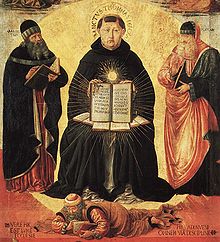
Filioque, a Latin term meaning "and from the Son," was added to the original Nicene Creed, and has been the subject of great controversy between Eastern and Western Christianity. The term refers to the Son, Jesus Christ, with the Father, as the one shared origin of the Holy Spirit. It is not in the original text of the Creed, attributed to the First Council of Constantinople (381), which says that the Holy Spirit proceeds "from the Father" without the addition "and the Son".

The magisterium of the Catholic Church is the church's authority or office to give authentic interpretation of the word of God, "whether in its written form or in the form of Tradition". According to the 1992 Catechism of the Catholic Church, the task of interpretation is vested uniquely in the Pope and the bishops, though the concept has a complex history of development. Scripture and Tradition "make up a single sacred deposit of the Word of God, which is entrusted to the Church", and the magisterium is not independent of this, since "all that it proposes for belief as being divinely revealed is derived from this single deposit of faith".

Leo Allatius was a Greek scholar, theologian, and keeper of the Vatican library.

The Summa contra Gentiles is one of the best-known treatises by Thomas Aquinas, written as four books between 1259 and 1265.

Mark of Ephesus was a hesychast theologian of the late Palaiologan period of the Byzantine Empire who became famous for his rejection of the Council of Ferrara-Florence (1438–1439). As a monk in Constantinople, Mark was a prolific hymnographer and a follower of Gregory Palamas' theological views. As a theologian and a scholar, he was instrumental in the preparations for the Council of Ferrara-Florence, and as Metropolitan of Ephesus and delegate for the Patriarch of Alexandria, he was one of the most important voices at the synod. After renouncing the council as a lost cause, Mark became the leader of the Orthodox opposition to the Union of Florence, thus sealing his reputation as a defender of Eastern Orthodoxy and pillar of the Eastern Orthodox Church.
Hypostatic union is a technical term in Christian theology employed in mainstream Christology to describe the union of Christ's humanity and divinity in one hypostasis, or individual personhood.
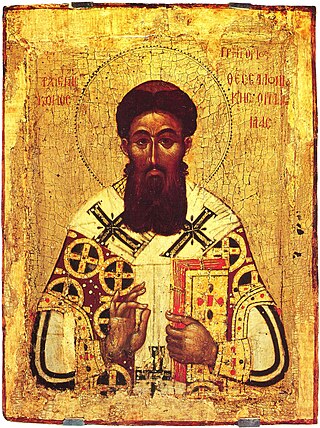
In Eastern Orthodox (palamite) theology, there is a distinction between the essence (ousia) and the energies (energeia) of God. It was formulated by Gregory Palamas (1296–1359) as part of his defense of the Athonite monastic practice of Hesychasm against the charge of heresy brought by the humanist scholar and theologian Barlaam of Calabria.
Homoousion is a Christian theological term, most notably used in the Nicene Creed for describing Jesus as "same in being" or "same in essence" with God the Father. The same term was later also applied to the Holy Spirit in order to designate him as being "same in essence" with the Father and the Son. Those notions became cornerstones of theology in Nicene Christianity, and also represent one of the most important theological concepts within the Trinitarian doctrinal understanding of God.
Eastern Orthodox theology is the theology particular to the Eastern Orthodox Church. It is characterized by monotheistic Trinitarianism, belief in the Incarnation of the divine Logos or only-begotten Son of God, cataphatic theology with apophatic theology, a hermeneutic defined by a Sacred Tradition, a catholic ecclesiology, a theology of the person, and a principally recapitulative and therapeutic soteriology.
Hugh Etherianus, or Ugo Eteriano (1115–1182), was an adviser on western church affairs to Byzantine emperor Manuel Comnenus. Nothing is known of his family apart from a letter sent after his death by the Pope to his brother Leo, nicknamed Tuscus, which mentions a "nephew", possibly Hugh's son. He studied under Alberic in Paris some time before 1146, then was in Constantinople from about 1165–82. He and his brother Leo Tuscus, were Tuscans by birth, employed at the court of Constantinople under the Emperor Manuel I Comnenus. Hugh was a Catholic theologian and controversialist, who became a Cardinal at the end of his life. He was born in Pisa and died in Constantinople.
Demetrios Kydones, Latinized as Demetrius Cydones or Demetrius Cydonius, was a Byzantine Greek theologian, translator, author and influential statesman, who served an unprecedented three terms as Mesazon of the Byzantine Empire under three successive emperors: John VI Kantakouzenos, John V Palaiologos and Manuel II Palaiologos.

Palamism or the Palamite theology comprises the teachings of Gregory Palamas, whose writings defended the Eastern Orthodox practice of Hesychasm against the attack of Barlaam. Followers of Palamas are sometimes referred to as Palamites.

The Catholic Church and the Eastern Orthodox Church have been in a state of official schism from one another since the East–West Schism of 1054. This schism was caused by historical and language differences, and the ensuing theological differences between the Western and Eastern churches.

Thomas Aquinas was an Italian Dominican friar and priest, an influential philosopher and theologian, and a jurist in the tradition of scholasticism from the county of Aquino in the Kingdom of Sicily.
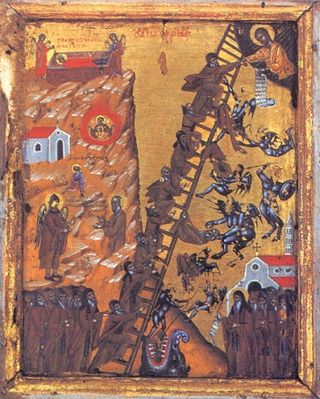
Theosis, or deification, is a transformative process whose aim is likeness to or union with God, as taught by the Eastern Catholic Churches and the Eastern Orthodox Church; the same concept is also found in the Latin Church of the Catholic Church, where it is termed "divinization". As a process of transformation, theosis is brought about by the effects of catharsis and theoria. According to Eastern Christian teachings, theosis is very much the purpose of human life. It is considered achievable only through synergy of human activity and God's uncreated energies.
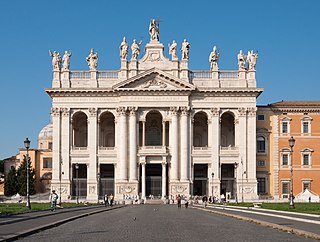
The Latin Church is the largest autonomous particular church within the Catholic Church, whose members constitute the vast majority of the 1.3 billion Catholics. The Latin Church is one of 24 churches sui iuris in full communion with the pope; the other 23 are collectively referred to as the Eastern Catholic Churches, and have approximately 18 million members combined.

The Church Fathers, Early Church Fathers, Christian Fathers, or Fathers of the Church were ancient and influential Christian theologians and writers who established the intellectual and doctrinal foundations of Christianity. The historical period in which they worked became known as the Patristic Era and spans approximately from the late 1st to mid-8th centuries, flourishing in particular during the 4th and 5th centuries, when Christianity was in the process of establishing itself as the state church of the Roman Empire.
The history of the filioque controversy is the historical development of theological controversies within Christianity regarding three distinctive issues: the orthodoxy of the doctrine of procession of the Holy Spirit as represented by the Filioque clause, the nature of anathemas mutually imposed by conflicted sides during the Filioque controversy, and the liceity (legitimacy) of the insertion of the Filioque phrase into the Nicene Creed. Although the debates over the orthodoxy of the doctrine of procession and the nature of related anathemas preceded the question of the admissibility of the phrase as inserted into the Creed, all of those issues became linked when the insertion received the approval of the Pope in the eleventh century.
The position of the Eastern Orthodox Church regarding the Filioque controversy is defined by their interpretation of the Bible, and the teachings of the Church Fathers, creeds and definitions of the seven Ecumenical Councils, as well as the decisions of several particular councils of the Eastern Orthodox Church.
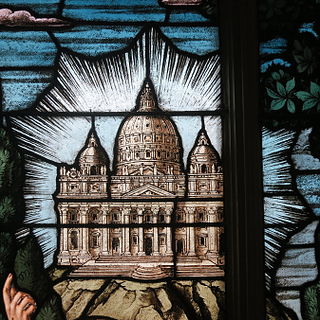
Catholic ecclesiology is the theological study of the Catholic Church, its nature, organization and its "distinctive place in the economy of salvation through Christ." Such study shows a progressive development over time being further described in revelation or in philosophy. Here the focus is on the time leading into and since the Second Vatican Council (1962–1965).
